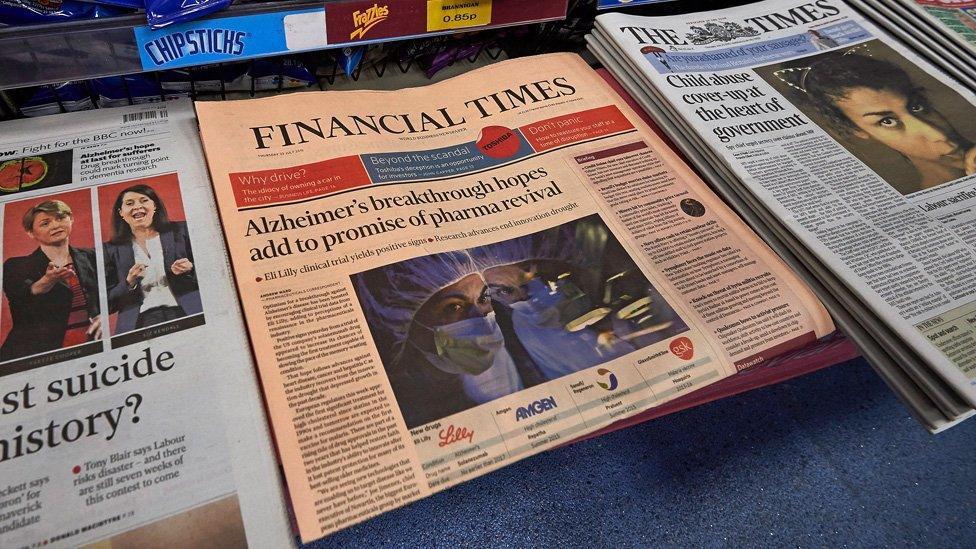The FT and the value of digital news
- Published
- comments

The Financial Times has a global paying audience, the majority of them with a digital subscription, and it makes a profit. But now - like many other great British institutions - it is going to have a foreign owner.
Japan's leading financial media group Nikkei has paid £844m to acquire the FT Group. That has been described as a luxury price by news industry watchers, which tells you something about how far old media firms have fallen out of fashion. They point out that the price is about five times what the Amazon founder Jeff Bezos paid for the venerable Washington Post two years ago, a deal described then as remarkably generous.
But would a better comparison be with the valuations of digital news startup businesses? Buzzfeed, a business with about a fifth the revenues of the FT, was valued at $850m (£550m) last year. Once just the home of funny cats and daft lists, it is now hiring lots of serious journalists and expanding its coverage into politics and other heavyweight news.
Four years ago the Huffington Post was sold to AOL for $315m (£203m) but the sale of its parent to the mobile giant Verizon has sparked speculation that the web news service could be sold on at anything up to $1bn.
But the standout example is Vice Media, the Canadian underground magazine which has morphed into a global video news operation. It raised $500m last year at a valuation of $2.5bn (£1.6bn). A business which (as far we can see) has roughly the same revenues as the Financial Times is worth twice as much.
What these valuations tell us, of course, is that the market thinks all of these shiny digitally native operations are going to grow rapidly while an old dead tree business like the FT might just coast along. That ignores two things. The new media firms are for the most part giving away their journalism for free, while relying on advertisers and sponsors for revenue. (Though Vice Media is doing deals which see broadcasters pay for its edgy videos).
Meanwhile, the FT has pulled off the rare trick of persuading its readers that quality journalism on computers, tablets and smartphones is worth paying for. Paywalls have been controversial in the newspaper world, but the alternative route of maximising your audience by giving news away for nothing and relying on advertising has yet to prove itself.
Yesterday shares in the Daily Mail group fell sharply after it revealed a mere £1m rise in revenues from online ads in the last three months coupled with a £7m decline in print advertising. That news industry cliche, analogue dollars replaced by digital cents, appears truer than ever.
Financial Times journalists seem somewhat shellshocked by yesterday's turn of events, but relieved to be told by their leaders that the new owners are committed to editorial independence and to growing the business. As a former editor Richard Lambert told the BBC, having paid such a high price, Nikkei would be crazy to do anything to damage the newspaper.
He also praised Pearson for having been a model owner, although there have been whispers from some at the Financial Times that its parent never invested quite enough in growth. It has decided that its future lies in education and the FT will grow faster in the hands of a wealthy and focused new owner. The short-term gain may have pleased its shareholders, but yet again a UK company has decided to sell up rather than build a global digital business.